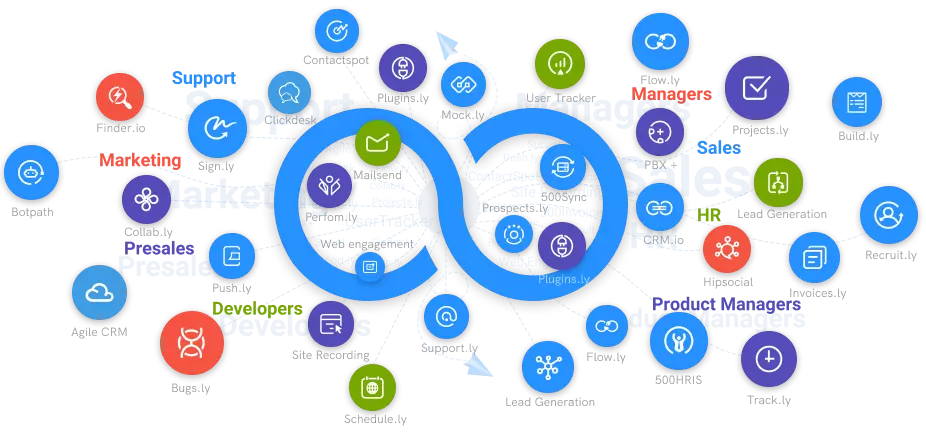Why Is It Important to Understand User Behavior in Order to Increase Conversions?
Behavioral analytics are used to show what your website users do when browsing your site. The technology that capture Website users' activities and record each individual and their behavior.
#1
Distinctive Dashboard Analytics
#2
Unlimited Recordings
#3
User Behavior Analytics
#4
Improved Engagement Rate
#5
Real-time Monitoring System
#6
Customer Behaviour Analytics
#7
User Experience Optimization
#8
Improved Conversions & Revenue
#9
Unbelievable pricing - the lowest you will ever find
#10
Everything your business needs - 50 apps, 24/5 support and 99.95% uptime
User behavior analysis may help you understand what your website visitors do and how they use your online material. By monitoring user behavior, you can tailor messages and experiences to the right audience at the right moment. As a result, your conversions will increase, as will many other aspects of your website's performance. User behavior analytics allows you to discover the specific activity patterns of your website users. They enable you to group your clients based on some shared characteristics. Then, you may adapt your marketing and promotions to this specific niche. For example, analytics of user behavior might help you find clients who are interested in similar items or categories. Based on this browsing activity, you can then tailor product recommendations. For example, you may immediately identify which parts of your site are more interesting and which fail to pique your visitors' interest. You may then use this data to make faster and more accurate changes to your website and ensure better company success.
What Exactly is a Heatmap?
A heat map is a powerful data visualization tool that depicts the intensity of a certain subject in two dimensions. The color difference can be demonstrated by the color or the intensity, allowing viewers to visually perceive how the topic in issue varies through time or in clustered form. Actually, the cluster heat map and the area heat map are two distinct types of heat maps. A cluster heat map displays quantities in a matrix of fixed cell size, with rows and columns representing various phenomena and categories. Furthermore, it is intended and somewhat arbitrary to arrange rows and columns to show or depict clusters found by statistical research. The actual cell size is arbitrary but large enough to be observed clearly. A magnitude location on a spatial heat map, on the other hand, is caused by a magnitude location in that specific space. There is no concept of cells, and there are no expectations of continuous variation of the phenomenon or topic, as we previously referred to it. A website heat map is a data visualization method created with heatmap software that is used to help business owners and UX professionals understand how particular parts of their website are doing and how they may be improved. A website heatmap, in layman's words, is a graphical representation of data in the form of a diagram or map, with different colors indicating different data sets and values. Most heatmap software generates heatmaps that illustrate web page performance using a warm-to-cold color scheme, with the warmest color indicating the most visitor interaction and the coldest color signifying the least visitor engagement.
Important Web Analytics to Monitor
With the appropriate web analytics – and the right strategy for employing them – businesses can discover and seize development possibilities, as well as tackle some of the most pressing issues. But, with so many analytics choices accessible, how can you know which ones are more important than others?
Rate of Participation You've probably heard that it's critical to create a page for your company on all of the major social networks. You probably keep track of the number of fans you have on each network. Even while it can offer you some information, it is not a particularly useful statistic to measure. Instead, you should focus more on interaction.
Bounce Rate If you utilize Google Analytics, you have almost certainly come across the term "bounce rate." This metric is important since it shows the percentage of bounced-out visits to your website and marketing activities. Bounced visits are website visits that occur when visitors leave your site after arriving. This means that a high bounce rate usually indicates that your website is not relevant to your visitors.
Exit Page Rate There is a distinction between a guest who leaves and a visitor who leaves your home, despite the fact that they sound the same. A rebound occurs when a visitor enters on your site and leaves after seeing only one page. An exit occurs when a user visits and then leaves a number of pages on your website. It's understandable if certain of your websites have high abandonment rates. For example, if you run an online store, having a high-exit page is perfectly fair because the visitors to that page have completed their task and opted to go.
Traffic Sources In Google Analytics, traffic sources are sometimes referred to as a "dimension." Tracking all of your traffic sources reveals where your visitors originate from. With this information, you may create a more realistic marketing plan by improving and resolving issues on channels where you are underperforming.
Returning Visitors vs. New Visitors One thing to keep in mind while making major or minor business decisions is to ensure that your actions do not harm your present customer base but rather improve their user experience while attracting more new clients. To make secure and low-risk business decisions, you must first understand who your customers are. This indicates that you should be able to determine and segment your customers based on age, gender, location, interests, hobbies, and so on in order to make choices that will improve your user experience.
Problems with the website It's time to make an unintentional error, just like anything else in life. When you see an error, you may easily rectify it. However, there is still the negative potential of these blunders up to that point, and you risk repeating those errors. The same stuff may be found on your website. You may easily make mistakes when deciding where to place your CTAs, what headlines to use, and how your website navigation works. And, while this may not appear to be a problem to you, it may be an inconvenience to visitors to your site.
Rate of Conversion Don't get us wrong: we're not saying it's unnecessary to evaluate your website traffic. We would just want to emphasize that if a significant part of the people who visit your website do not convert into paying customers, they will not be distant from you. When you monitor your conversion rate, you can determine whether all of your pages are operational and identify any potential issues influencing the conversion rate on those pages.
As you can see from the examples above, web analysis may be useful to the growth of your business. However, not all analytics will give you exact, unbiased data that can improve your outcomes. Not until you spend a lot of money and time trying to make sense of it all.





